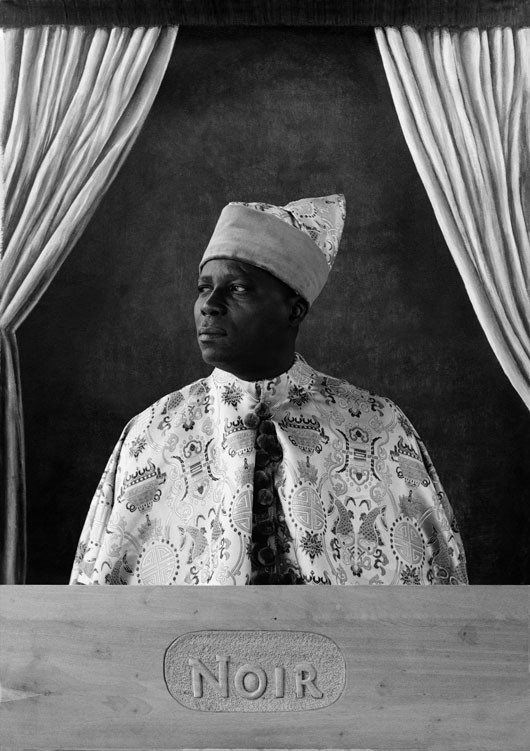From Black to White: History of Caste and Colonialism in Haiti [SLIDESHOW]


Photographer Leah Gordon explores the racist practice of grading skin colour from black to white in 18th-century colonial Haiti in her latest exhibition.
Gordon said she found inspiration for the series of photographs in Caste, on show at the Riflemaker gallery in London, from the writings ofMoreau de Saint-Méry, a colonialist who lived in Haiti when African slaves were used as cheap labour on the sugar plantations.
Moreau developed a surreal taxonomy of race, which classified skin colour in nine stages from black to white, in which white or blanche, was inevitably socially superior to black or noir.
With his system of classification, Moreau attached physical, moral and intellectual attributes to each of the nine degrees of shading and claimed that the varying presence of black was responsible for distinctive traits.
The system ranged from pure Noir through Sacatra, Griffe, Marabou, Mulatre, Mamelouque, Quarteronnee and Sang-Melee to Blanche.
Some of the categories, such as Marabou and Griffe, borrow from mythology and refer to beasts.
In response to the gradation, Haitian historian Colin Dayan notedthat Moreau "demonstrates to what lengths the imagination can go if driven by racial prejudice".
At the times of Moreau's writings, the average slave born on a plantation in Haiti lived 15 years after starting work.
The high rate of slave mortality was due to overwork, undernourishment and cruelty.
Slaves were usually organised in work groups, according to their strength and health.
They were under the direct orders of a commander, often a creole slave, who received better food and clothing than members of his team.
The hierarchical organisation of plantations thereby mirrored and reproduced the racial preconceptions of its owners.
Moreau further differentiated between slaves who belonged to the French and Spanish colonialists, demonstrating the central role that concepts of race and ethnicity played in the legitimisation of their discourses.
Drawing on the different gradations of colour in her work, Gordon, who is white, depicted herself at one end of the scale, while her partner, Haitian sculptor Andre Eugene, is at the other end of the spectrum.
Gordon, who grew up in Ellesmere Port, Liverpool, has been working as an artist and filmmaker in Haiti for the past 20 years.
"Ironically this colour classification system is one of the few things that puts me in the picture. The concept of this work is all about visual questions," she told IBTimes UK.
"The emphasis and correlation between ancestral links and history is very strong in Haiti, so for me this work was all about asking questions, such as where do I stand in the middle of this?"
The exhibition Caste runs until 14 July.
© Copyright IBTimes 2025. All rights reserved.




















